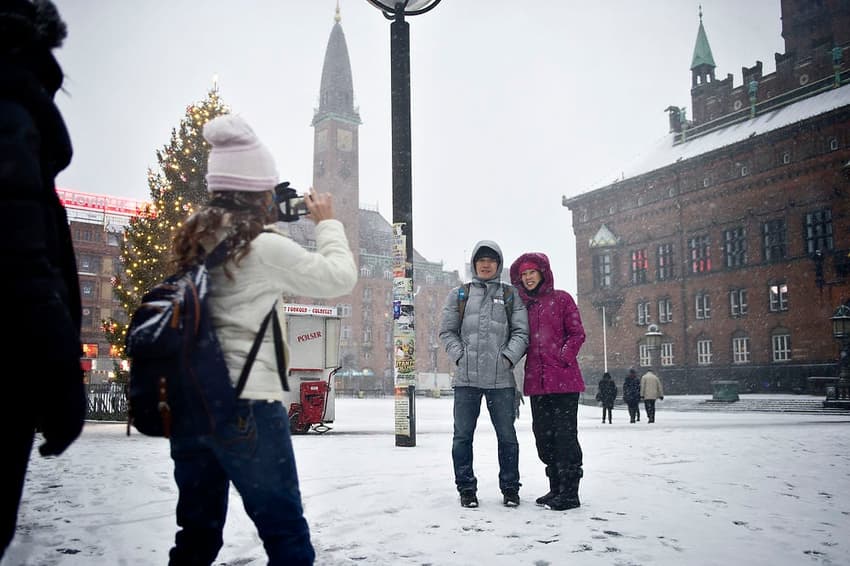Winter visitors bring boost for Denmark’s tourism industry

The number of overnight stays by tourists in Denmark has increased by 50 percent during the winter season compared to 2010, according to new data from Statistics Denmark.
Winter is here – and that’s a good thing, if you ask the Danish tourism industry.
New data from Statistics Denmark shows that the number of overnight stays increased by 50 percent in the winter season in 2018 compared to 2010, writes dibusiness.dk.
“The new and vast range of experiences – including cultural experiences – means that both Danish and international tourists come flocking, including outside the traditional high season,” Sune K. Jensen, head of tourism and experience economy at the Confederation of Danish Industry (Dansk Industri, DI), said.
Skallerup Seaside Resort in northern Jutland is one example of a resort which has successfully attracted tourists with sea infusions and special off-peak discounts.
The concept ‘365 Great Days’, guaranteeing guests the same experiences and activities all year round, has been introduced by the resort.
In addition, Skallerup Seaside Resort, which has 282 holiday cottages and apartments, has winter-specific offers for tourists who stop by the North Sea coast during the winter season.
“In the winter season 2018-19, we’ve had great success with our new sea infusions. It’s a combination of winter swimming and sauna infusions in our mobile sauna, which is especially popular with our guests during the colder months,” CEO Jørgen Høll said.
The resort has also put together special offers for regular guests, such as two-for-one cottage rentals in selected periods.
“This has resulted in even more guests during the winter season. In fact, we hardly have a low season anymore. To put it humbly, we’ve got a rather good occupancy rate,” Høll said.
The new tourism data also shows an increase the number of overnight stays during the high season – albeit by a lower factor of 13 percent, Jensen noted.
“Denmark is generally becoming a year-round destination. This is the also the case with attractions such as Tivoli Gardens, which offers activities for guests all year round,” he said.
Jensen said that that Copenhagen had more or less eliminated its low season, and that the trend could be extended to other parts of Denmark.
“If this growth continues, we’ll see tourism as a whole-year business in the rest of the country as well – naturally with a high season during the summer months, but without a real low season in winter,” he said.
READ ALSO: International tourists flock to Copenhagen's Tivoli for Christmas hygge
Comments
See Also
Winter is here – and that’s a good thing, if you ask the Danish tourism industry.
New data from Statistics Denmark shows that the number of overnight stays increased by 50 percent in the winter season in 2018 compared to 2010, writes dibusiness.dk.
“The new and vast range of experiences – including cultural experiences – means that both Danish and international tourists come flocking, including outside the traditional high season,” Sune K. Jensen, head of tourism and experience economy at the Confederation of Danish Industry (Dansk Industri, DI), said.
Skallerup Seaside Resort in northern Jutland is one example of a resort which has successfully attracted tourists with sea infusions and special off-peak discounts.
The concept ‘365 Great Days’, guaranteeing guests the same experiences and activities all year round, has been introduced by the resort.
In addition, Skallerup Seaside Resort, which has 282 holiday cottages and apartments, has winter-specific offers for tourists who stop by the North Sea coast during the winter season.
“In the winter season 2018-19, we’ve had great success with our new sea infusions. It’s a combination of winter swimming and sauna infusions in our mobile sauna, which is especially popular with our guests during the colder months,” CEO Jørgen Høll said.
The resort has also put together special offers for regular guests, such as two-for-one cottage rentals in selected periods.
“This has resulted in even more guests during the winter season. In fact, we hardly have a low season anymore. To put it humbly, we’ve got a rather good occupancy rate,” Høll said.
The new tourism data also shows an increase the number of overnight stays during the high season – albeit by a lower factor of 13 percent, Jensen noted.
“Denmark is generally becoming a year-round destination. This is the also the case with attractions such as Tivoli Gardens, which offers activities for guests all year round,” he said.
Jensen said that that Copenhagen had more or less eliminated its low season, and that the trend could be extended to other parts of Denmark.
“If this growth continues, we’ll see tourism as a whole-year business in the rest of the country as well – naturally with a high season during the summer months, but without a real low season in winter,” he said.
READ ALSO: International tourists flock to Copenhagen's Tivoli for Christmas hygge
Join the conversation in our comments section below. Share your own views and experience and if you have a question or suggestion for our journalists then email us at [email protected].
Please keep comments civil, constructive and on topic – and make sure to read our terms of use before getting involved.
Please log in here to leave a comment.